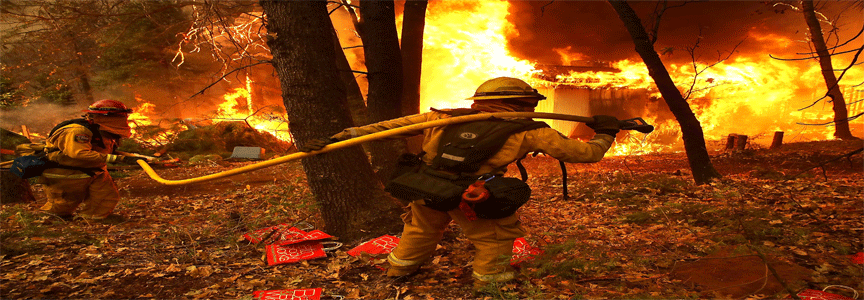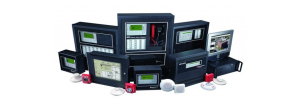Why do we classify risk areas?
This is the first basic question that we must answer, why do we classify the areas and the things in them and consider them dangerous? Due to the fact that normal electrical equipment such as motors or lamps cannot be used in such areas without taking into account some considerations to prevent accidents, or in such areas we cannot use electrical equipment that temporarily creates energy and this Use dangerous substances that ignite or explode and cause damage and cause a huge accident.
Therefore, in dangerous areas, we use special electrical equipment and files that protect us against explosions.
Note that the presence of flammable or explosive materials in an area does not in itself mean a high risk of fire or explosion. A flammable gas must combine with air under certain conditions to cause an explosion. Because such conditions do not exist equally in all areas where these materials are kept, the concept of classification of risk areas has been created. It should be noted that the classification of danger zones is done for areas where flammable substances or gases are present in daily operations and activities.
In unusual situations such as accidental leakage of a large amount of flammable gas, this classification is not used because such situations are simply not predictable. In everyday working conditions, there are some areas where flammable materials and gases exist. Therefore, the gas storage area in a tanker, the insulation areas of a gas pump, the areas around the valve of tankers where flammable liquids are stored are all risk areas that should be visible in the classification areas. We classify some areas with a high risk of fire and explosion and accept some with a lower risk. Some areas, except in rare cases, are free from the possibility of fire. For example, if an industrial factory has a lot of open space and its office buildings are several hundred meters away from the factory, the probability of an explosion in the office building is very low.
How to classify and separate these areas in a structured way is the main topic of this article. Before going into the classification of regions, we will review some key concepts.
What is the danger?
A hazard is an inherent property of a substance that can harm human equipment or the environment. An example of a hazard is a large amount of flammable gas stored in a pressurized tank.
What is risk?
Risk is a measure by which the probability of an adverse event is measured, so if a large volume of flammable gas is stored in a place, as we said, there should be a strong safety system there to prevent gas leakage, explosion. or any other type of accident, the probability of an accident will decrease and hence it can be said that the risk is low. Risk also depends on the severity of the incident. Imagine what would happen if a tank of acetone (a highly flammable substance) exploded. The severity of the accident is the amount of damage caused by an accident.
Therefore, risk is equal to the probability of an accident x the severity of the accident
As you know, the severity of the accident for fire and explosion in the danger areas is very high, so according to the above formula, if we want to reduce the risk, we should only focus on reducing the probability of the accident because with a good approximation, there is no possibility to control the occurrence and severity of the accident. we don’t have By classifying the risk areas, we seek to reduce the probability of an accident and thus reduce the direct risk.
Can we avoid risk absolutely?
The existence of the world without risk is impossible. Everyone knows that driving a car is more risky than flying an airplane. But staying in a house is also associated with risk and its risk is not zero.
Since risk cannot be avoided, we must manage it in a rational way. We do it unconsciously in our daily activities without realizing it, for example to reduce the risk of an accident with a car while driving on a busy street with passing. We reduce the risk of accidents by not running red lights and paying attention to oncoming cars. Note that we cannot reduce the severity of the incident here either. The severity of a car accident can result in death, disability or injury. Since we have no control over the severity of the accident, we reduce the other risk factor, which is the probability of the accident. Similarly, we manage the risk of locating or storing large volumes of flammable explosives by classifying hazard areas that reduce the likelihood of these items catching fire.
Classification of risk areas, risk criteria
The risk zone classification aims to show the explosion risk in these areas. This work cannot accurately predict the explosion or non-explosion and the risk of the area, and it divides the risk areas into places where the probability of explosion is higher or lower, or where it is intolerable. This classification gives us a tool to measure the explosion risk in such areas.
Advantages of hazard zone classification
If the classification of risk areas is done correctly, it will have the following benefits:
It gives us the description of the risk profile of the factory or site, and we can do things more safely with the help of it. This helps top management to understand the real risk and overcome them with appropriate strategies.
It helps us to design, use and control electrical equipment and proper tools at an economical cost so that it does not lead to fire and explosion.
The final costs of using the rules and standards
It reduces It makes current activities and operations safer and more profitable.
How are regions classified?
By identifying some areas of the factory or site as a risk area, we determine which area is more dangerous and needs more attention or equipment, and which area is less dangerous. We also find out which areas are safe.
By doing this, the description of the risk profiles will be clarified for senior managers and they will understand which areas in the factory have more risk than other areas. Classification of areas allows operational managers to avoid risk by choosing appropriate safety measures in known areas and thus reduce the overall risk of the plant. They can also plan operations, materials and personnel movement in a way that prevents access to these areas and establish specific work procedures for such areas.
How does classification of areas help to reduce costs?
The classification of electrical areas reminds us what kind of equipment should be used in those areas and what equipment cannot be used. How is this done?
For example, explosion-proof electrical equipment is only used in certain areas. These equipments have a certificate and special identifiers that tell us whether they can be used in certain dangerous areas or not. Accordingly, we can use this equipment in high-risk areas without worry.
Therefore, some electrical equipment and tools can only be used in zone 2, while others are also used in danger zone 1. We explain the classification based on risk areas below. The cost of this equipment varies depending on the type of protection and suitability for use in different areas. Therefore, if the design engineer mistakenly classifies a safe area as dangerous, or even if he considers an area that should be classified as a 2-hazard area as a 1-hazard area, you will inevitably have to pay more for the purchase of explosion-proof equipment with more capabilities. Such equipment is more expensive to maintain. Therefore, they impose more costs on the company during their lifetime.
On the other hand, if a dangerous area is wrongly classified as a safe area, the cost is very high because it may lead to an unwanted explosion that has financial and life consequences and also distorts the image of the company. Such events may endanger the life of the company.
Therefore, the correct classification of risk areas from the cost point of view is as important as the issue of safety engineering. In the following, we will first review some basic concepts of fire and explosion. Even if you are familiar with these concepts, it will be useful to review them. We will review some basic concepts about hazardous materials that will help you better understand the classification of materials and areas.
1- Light Hazard low risk environment
A place where the fire load and heat released from flammable materials is low and the fire load is less than 50 kg per square meter, such as office, residential, hospital and educational places.
2- Ordinary hazard environment – Group I Ordinary Hazard – Group I
Occupancy places where the height of flammable materials is less than 4.2 meters and the fire load is between 50 and 100 kg per square meter and the released heat is moderately distributed, such as places such as parking lots and restaurants.
3- Ordinary Hazard – Group II
A place where the amount of heat released due to fire is moderate and the fire load is at the maximum moderate level, i.e. about 100 kg/m2 and the height of flammable materials is less than 4.2 meters.
4- High-risk environment – Extra Hazard Group I
Occupancy where the density of flammable materials is high and the amount of heat released is high, the speed of fire spread is also high and the fire load is more than 100 kg/m2. Casting workshops, large warehouses and printing houses.
5- High-risk environment – Extra Hazard – Group II
A place where the amount of flammable materials is high and the amount of heat and spread of fire is also very high. In these places, the fire load is more than 100 kg per square meter and they have flammable liquids. Flammable liquids are described in the NFPA-30 code. Places such as refineries, paint rooms, petrochemical industries and large liquid and paper warehouses, etc.
Low risk environments
Religious places, clubs, schools.
Hospitals, administrative institutions, small libraries, museums.
Nursing homes, administrative offices, residential areas.
Restaurant, theater, conference hall.
Attic and unused spaces.
Environments with normal risk of group one
Car parking, bakery, food and dairy production.
Electrical equipment factories, production of glass and glass products.
Laundry and workplace restaurant.
Computer and electronic processing units.
Environments with normal risk of group two
Grain mill.
Factories producing chemical products.
Baking places, dry cleaners, stables.
Production of leather products.
Large libraries, machining workshops.
Paper and cardboard factories, book publishing and printing industries.
Wharf and dock.
Car repair shops and oil service.
Production of rubber, plastic and textiles.
Wood industry and wood cutting and manufacture of wooden products.
Group one high-risk environments
hangar.
Casting industries, metal extrusion.
Production of three-layer products, chipboard, MDF and multi-layer boards.
Tire recycling and drying.
Foam production industries and home appliances.
Printing industries and the use of materials with a flash point below 38 degrees Celsius.
Group two high-risk environments
Asphalt and your industrieslead asphalt
Paint and solvent industries.
Flammable liquid spraying processes.
Plastic manufacturing industries.
Processes using organic solvents and detergents.
Spray paint operation.
Fuel storage tanks and the process of refining and distributing petroleum products.
دیدگاه خود را با ما در میان بگذارید














